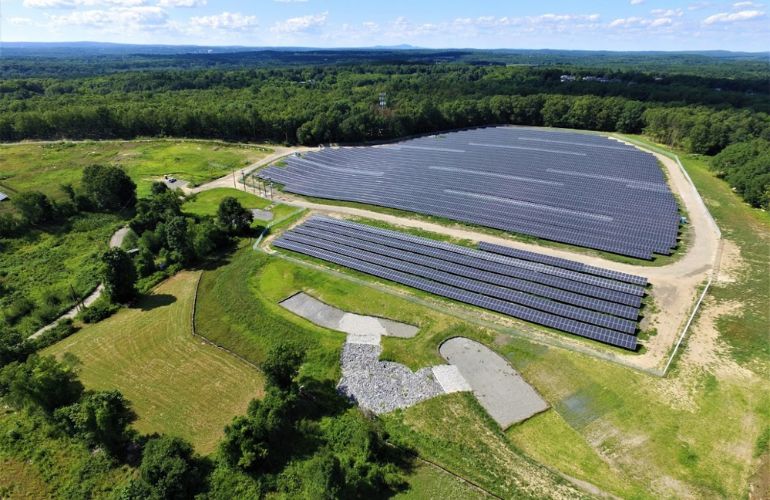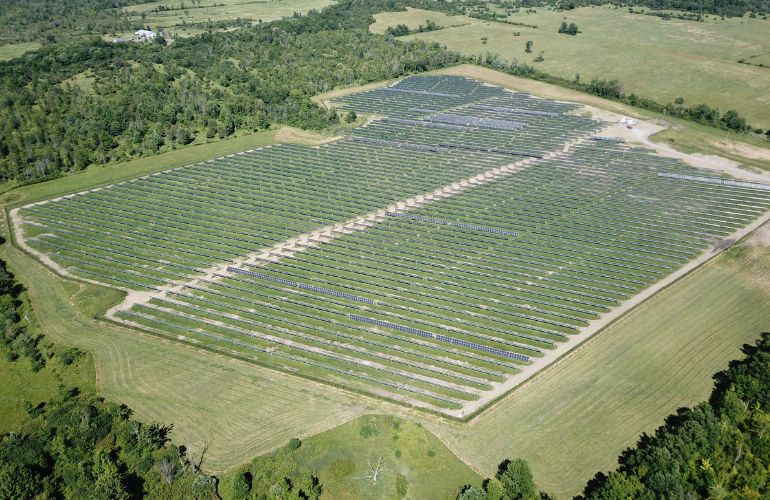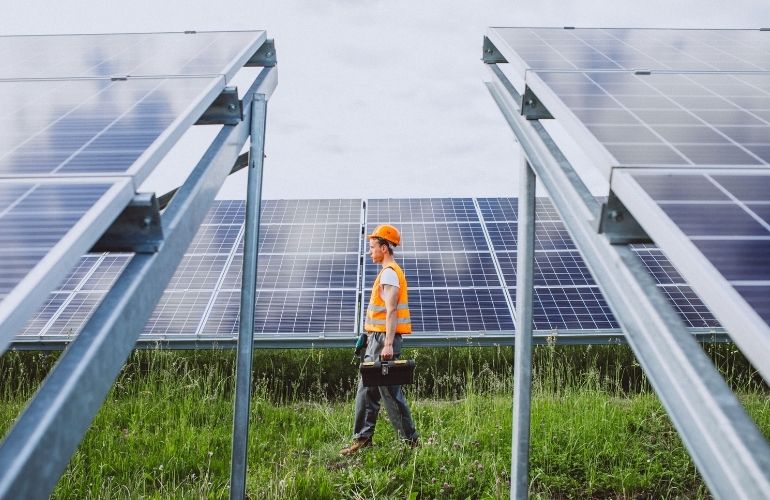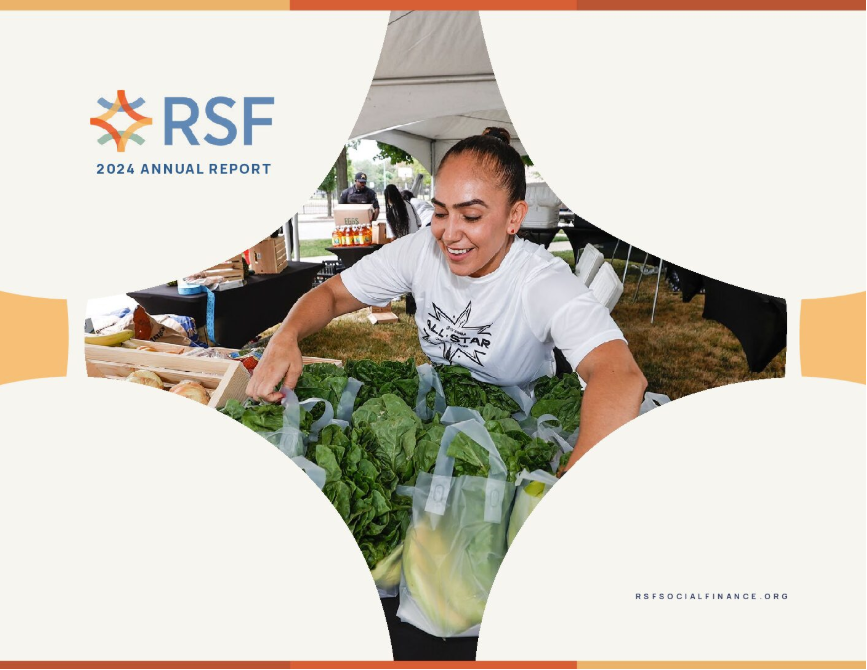Interest in community solar projects has grown explosively over the last decade, with 1,600 projects currently operating nationwide. Policies in 22 states and Washington, D.C., now support community solar, and 17 of those states have enacted provisions to encourage projects in low-income communities. This kind of infrastructure serves as an equalizer in the switch to clean power, providing affordable renewable electricity to businesses and households across the economic spectrum.
But despite their value to communities, small- and medium-size community solar projects often struggle to find financing. They’re not large enough for major funders, but they’re often too big for community lenders that aren’t familiar with community solar technology or economics.
Developers in this niche can scale this hurdle, though, with careful planning and by seeking mission-aligned funding. Often, finding the right funding for your community solar project simply requires you to show your work at every step. Following these suggestions can set up community solar projects to attract the right kind of capital.

Prove you can make the project happen
Demonstrate to investors that you’re knowledgeable, organized and trustworthy by identifying and explaining each of your project’s components. Funders want to know that your project is set up for success in three fundamental ways: It’s fully permitted and financially viable; partner relationships are strong and clearly defined; and your project plan accurately accounts for as many costs as possible.
Show that you’ve locked down your location by providing either proof of property purchase or a lease agreement. Next, make sure all your local and state permitting is in order so you’re ready to begin construction or operation. Nail down who your offtaker — the power purchaser — is going to be. Funders will want to know you have a power purchase or market participation agreement fully executed and ready to go. Keep in mind that the strength of your offtaker can be a factor in securing financing — it is easier to underwrite a deal if your purchaser is a large, established corporation than if it is a new or small organization. Also, if you have multiple offtakers, funders will want to know you’ve hired an experienced administrator who can handle the added complexity.
Before seeking investors, secure all the permits and approvals you need to operate. This includes working with your local utility to execute an agreement for connecting to the grid and to determine what other factors or components are required for operating in your location. Make sure your construction partners are also fully signed on and your contracts are defined and executed.
Account for construction costs as much as possible by determining the type of equipment you’ll need and proving that it’s all purchased or contracted, or that you have committed pricing. Once all this is in place, use modeling software to complete a cash-flow analysis to determine the debt financing and equity that the project can support. To make sure you haven’t overlooked anything, have a design or project engineer review your plans for financial feasibility as your final step before seeking funding.

Map your funding plan before knocking on doors
Funders will also want to know that you have explored, understood and pursued the types of funding that suit your project — and in the right order to make the most of the financing at your disposal. Financing for a typical community solar project can include a combination of tax equity and institutional debt, or public grants, tax equity and debt.
Debt financing is beneficial because it typically comes with longer terms than other types of private funding. But securing it will require you to prove viability by lining up all other funding in advance.
Start by seeking public grants. Local, state and federal agencies offer grants to facilitate clean energy production. Private funders will be more impressed if you have already been awarded grant funding than if you’ve just applied for grants.
Next, seek tax equity. A typical structure will pay a return to the tax equity provider over the first five or six years of operation based on a predetermined split of project cash flow. Once the tax equity is repaid, the allocation of project cash flow usually changes in favor of the project developer for the remainder of the project’s life.

Find the right funders
Once you understand your optimal funding structure, it’s time to find the right partners to finance your community solar project. This is often the biggest lift for developers because there’s no foolproof source or method for finding aligned investors. Expect this step to take some time.
One of the best ways to start is by talking to other solar developers. Investors in community solar frequently fund multiple projects. Also explore the few institutional lenders — Amalgamated Bank is one — that provide both tax equity and debt, which can significantly streamline your capital raise.
Nonbank lenders like RSF Social Finance can also be a funding solution. They may offer more specialized attention and consultative advice and are often willing to take on smaller deals than large commercial banks do, making them an ideal fit for small- and medium-size projects.
Impact investors generally can be a flexible source of capital, and many are especially interested in solar projects serving low- and moderate-income communities and communities of color.
Push for policy change
One of the best ways to ensure a bright future for the community solar field is to join with other developers to push for public programs and policies that create opportunities.
California’s public Infrastructure and Economic Development Bank, for example, has a Climate Catalyst Program that supports clean energy lenders. The state’s Solar on Multifamily Affordable Housing Program helps landlords in low- and moderate-income communities install solar panels on multifamily developments. Colorado, Massachusetts and New Jersey also have programs that boost solar development through public financing. Any of these initiatives can be a model for other states.
Another way to spur the advance of community solar is to join trade associations like the Solar Energy Industries Association and American Clean Power that are pushing for policy changes promoting solar development.
Pursuing funding is never easy, even in profitable, future-focused industries. Developers that demonstrate a strong understanding of their project’s needs and the solar finance field will be well positioned to find the right funding. Those who engage in field building will expand opportunity for everyone.
Michael Jones is vice president of lending business development at RSF Social Finance, where he recently facilitated a $5 million loan to help Sunwealth support a portfolio of 26 community-based solar projects across five states. This article originally appeared in Solar Power World Online.


